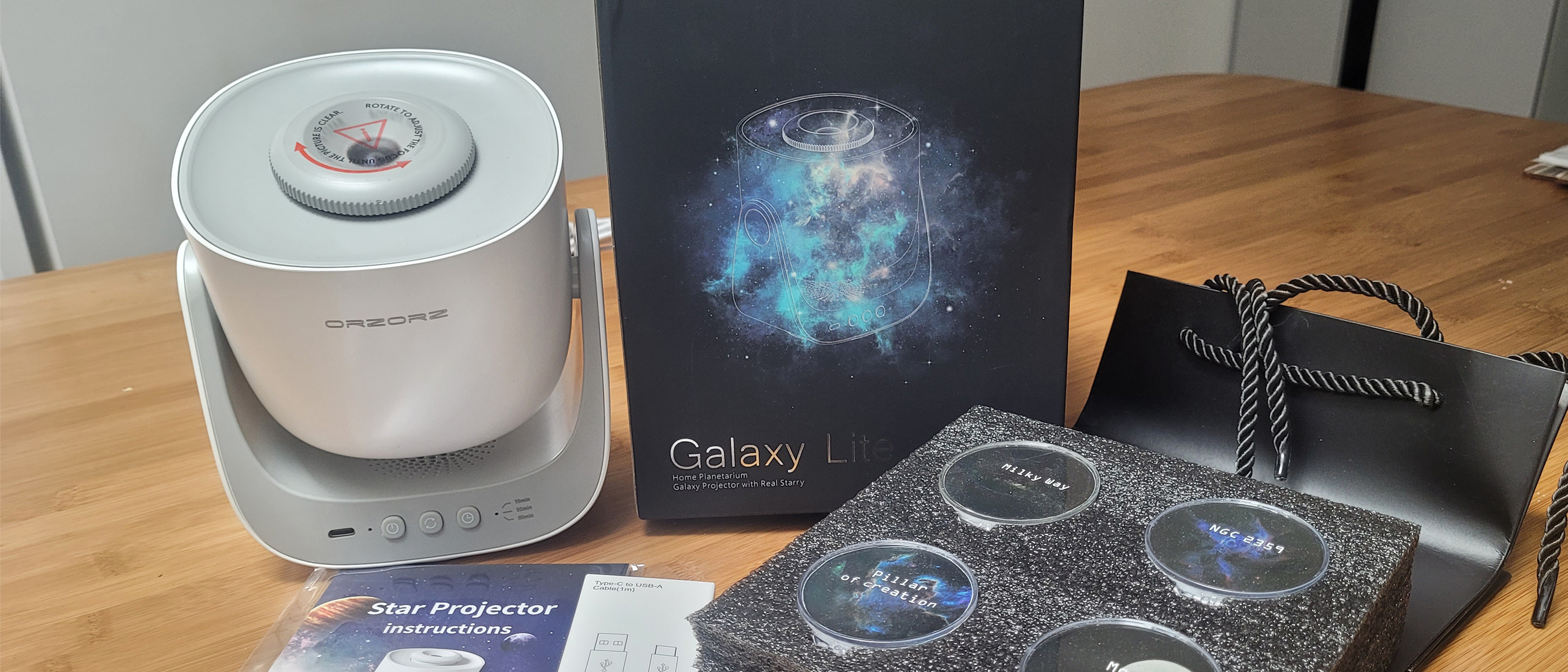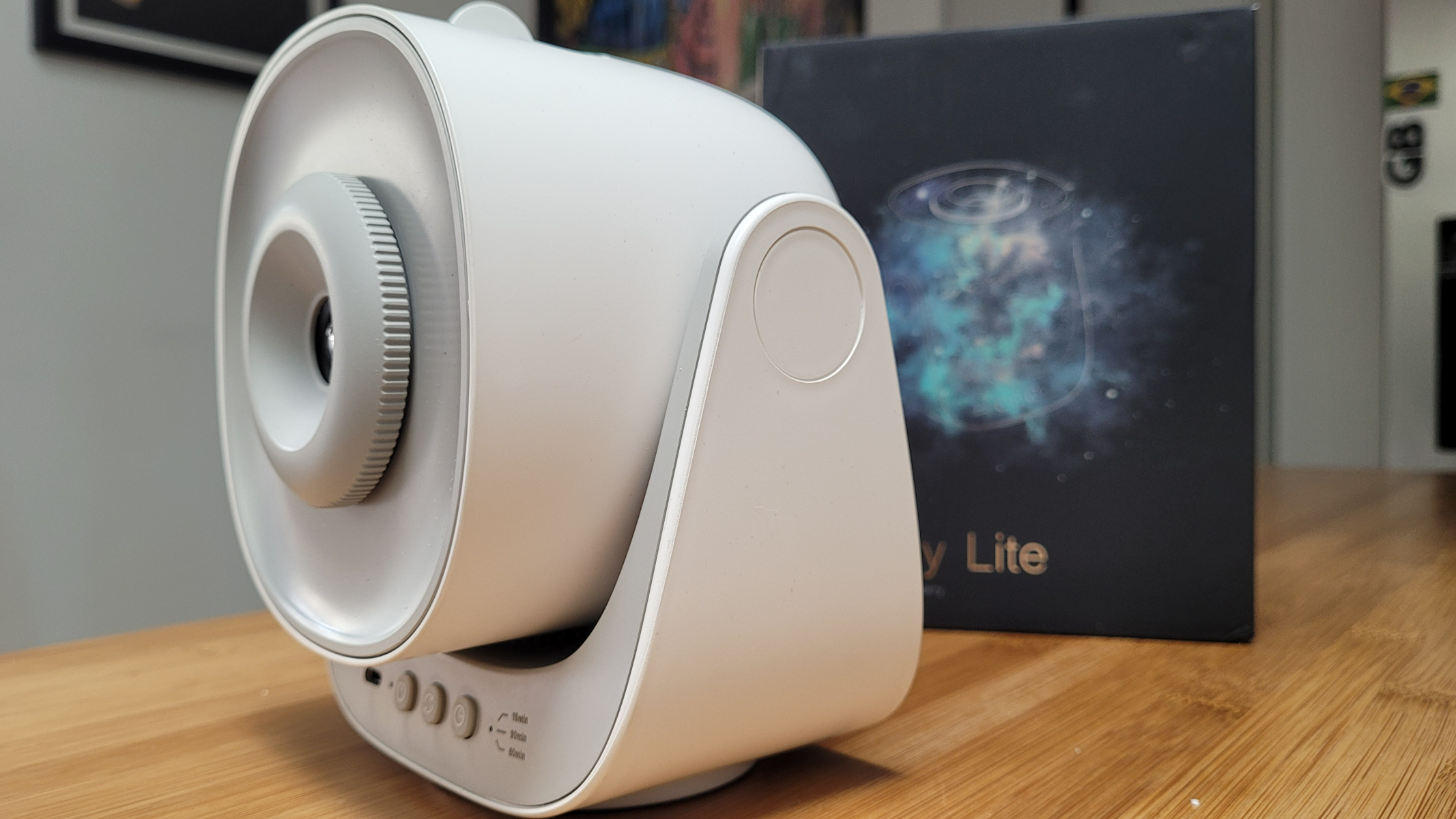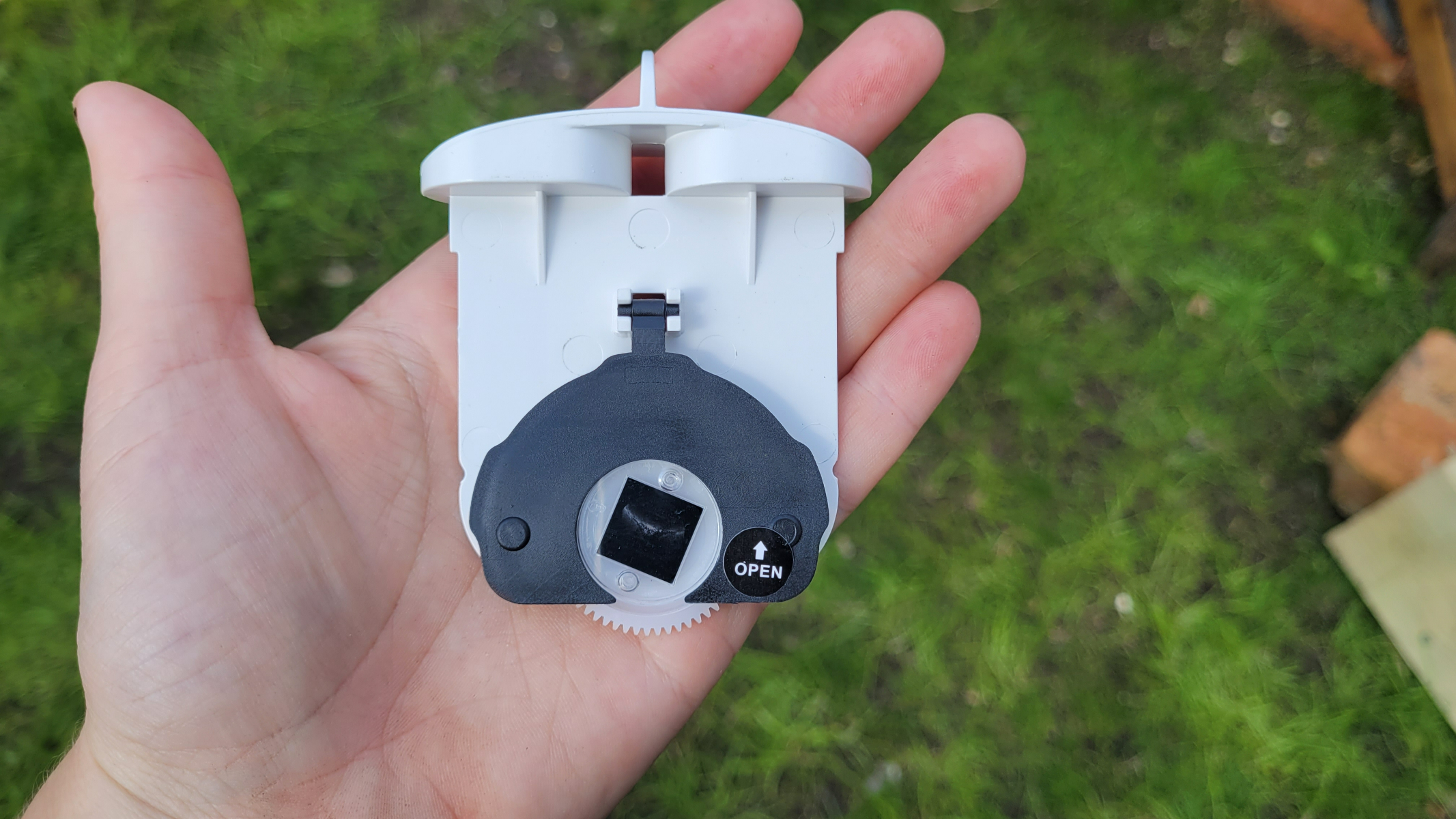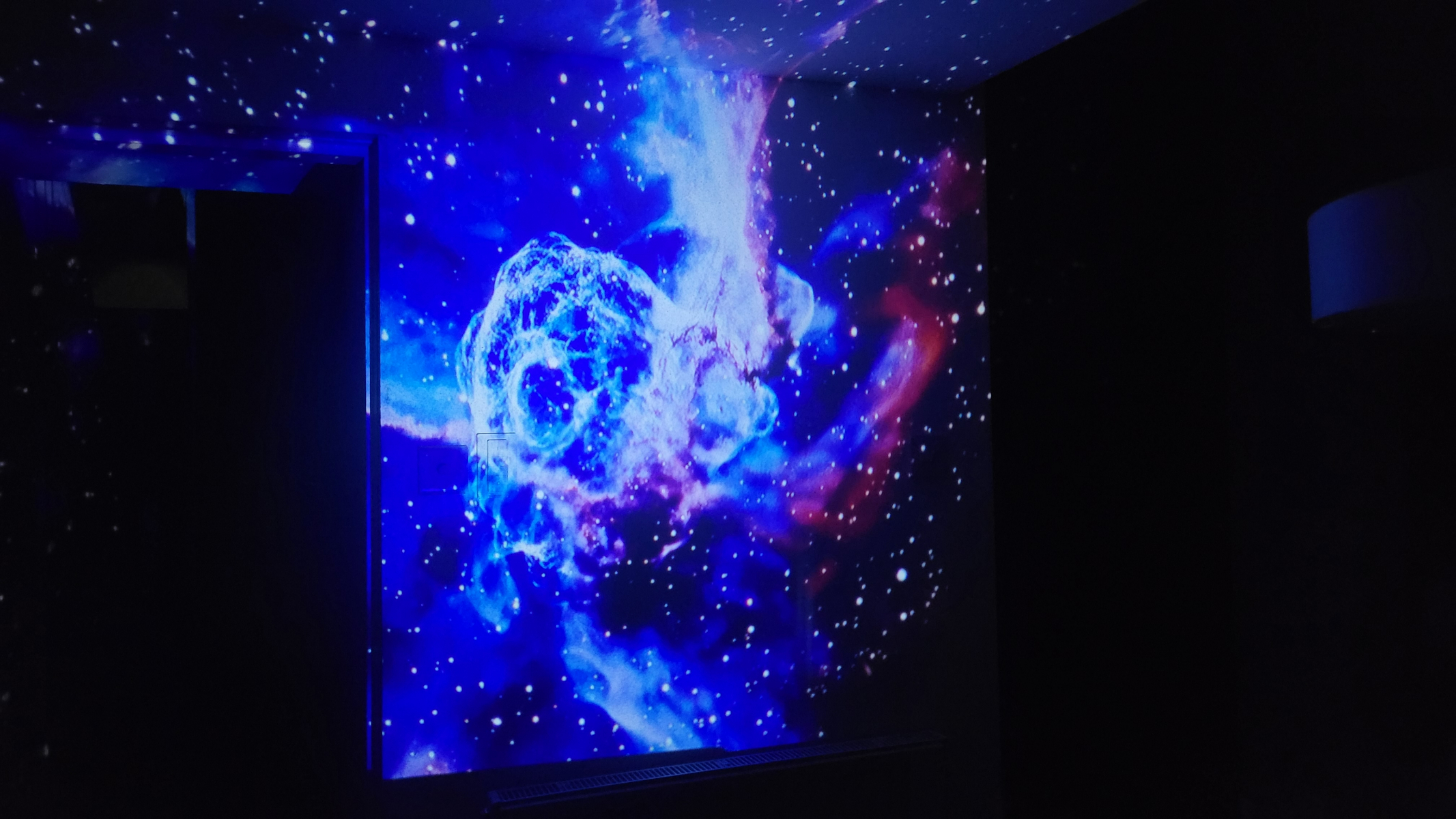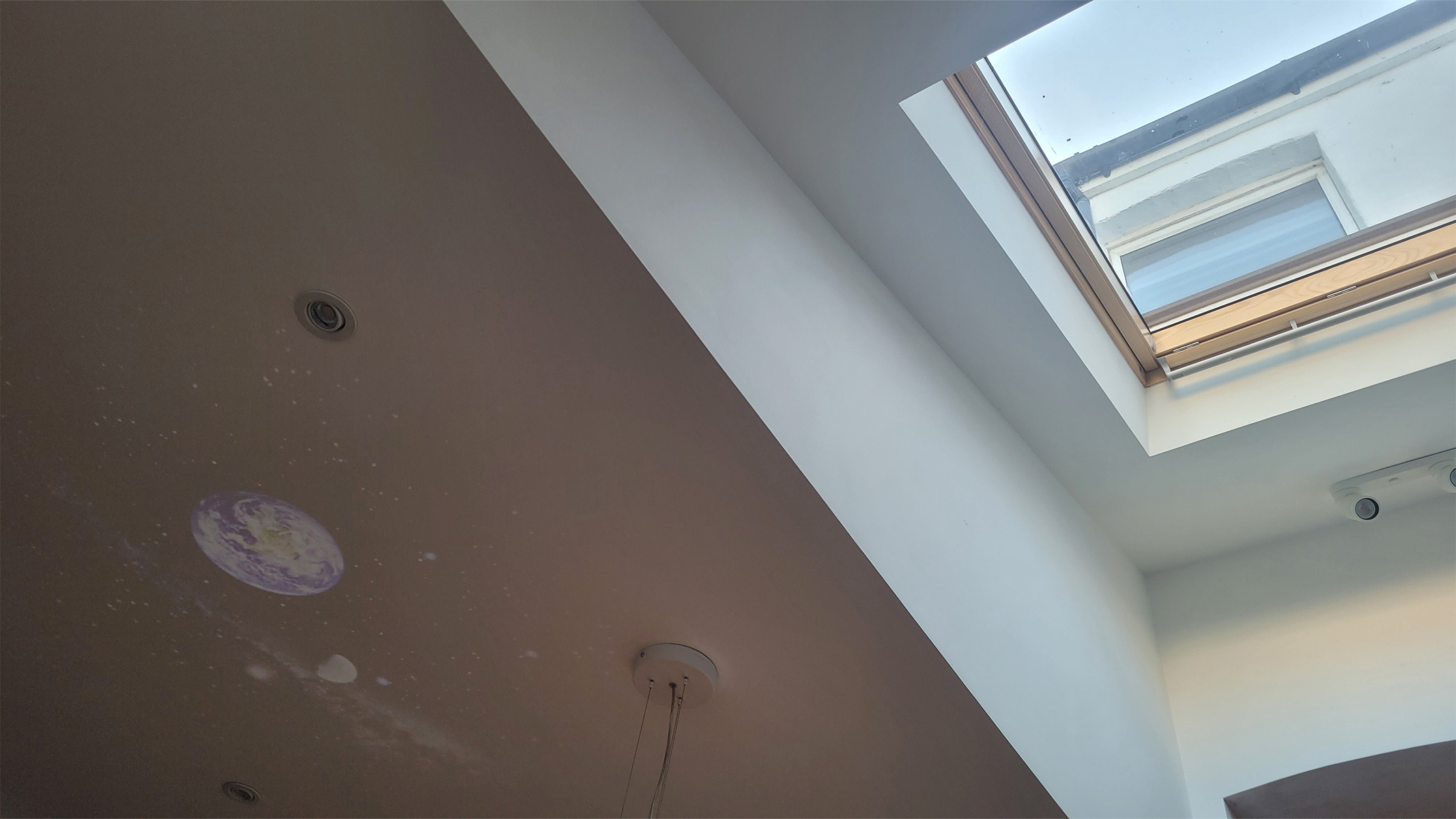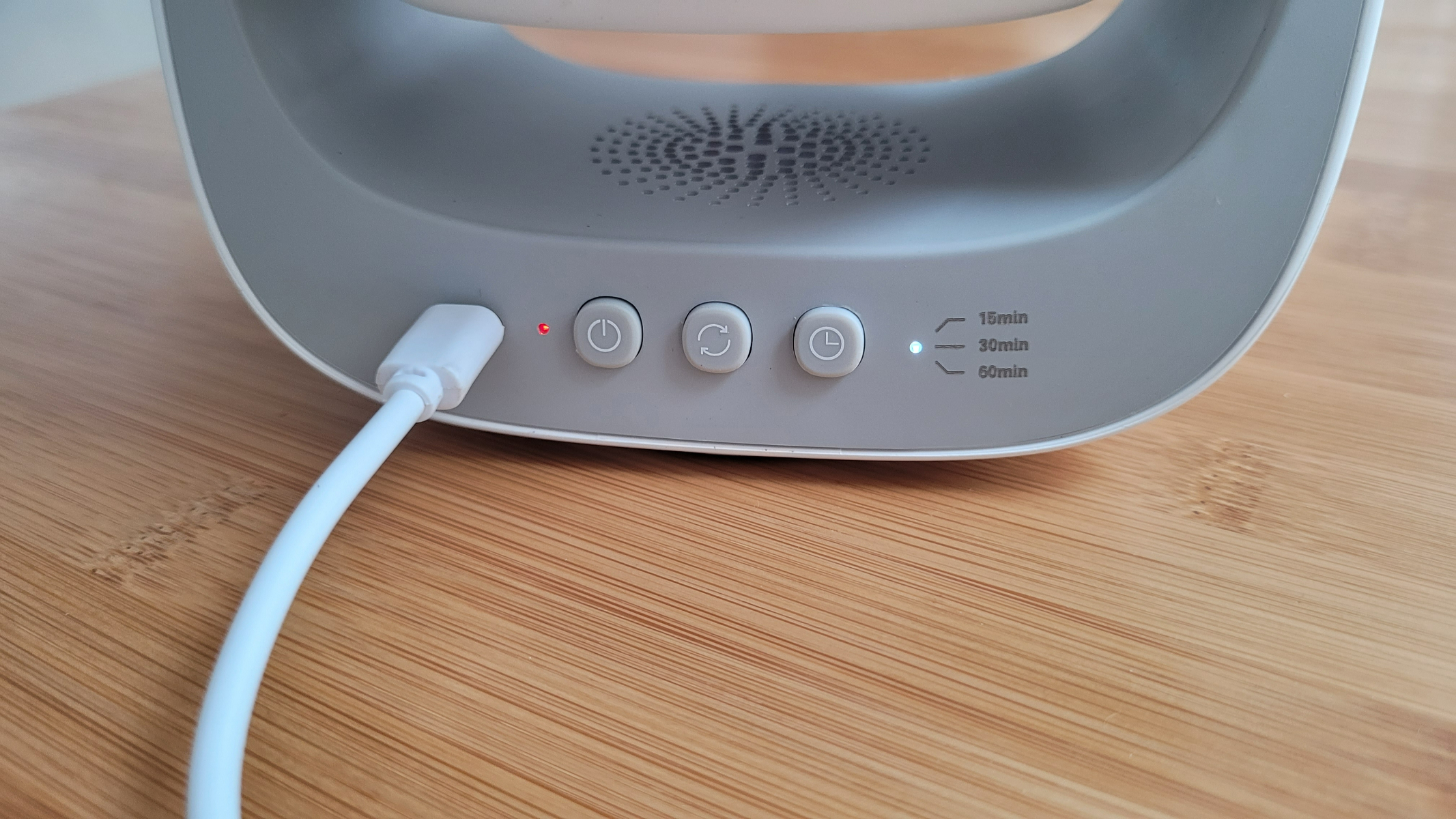Live Science Verdict
The Orzorz Galaxy Lite Home Planetarium Star Projector has everything we love about the Homestar Flux but without the expensive price tag. It's sleek, the images are vivid, it's simple to operate and it has a vast library of add-on disks. It's also rechargeable! Sure, at one time the Flux was probably 'best in class,' but newer models such as this are easily rivaling the big names.
Pros
- +
Large expandable collection
- +
High-quality imagery
- +
Looks stylish
- +
Rechargeable
Cons
- -
Tiny disks
- -
A touch noisier than some models
- -
Different sellers sell at different prices
Why you can trust Live Science
Discover distant planets, stars, and galaxies by immersing yourself in the rich colors that the Orzorz Galaxy Lite Home Planetarium Star Projector displays in your home.
Size: 160mm x 120 mm x 120mm
Bulb Type: LED
Laser: None
Control: On body
Rotation: Yes
Sleep timer: Yes
Speaker: No
Projection Surface: Max 4m
Orzorz is a relatively new company, founded in 2019. This and the fact their website and presence on social media (namely TikTok) is littered with giveaways, popups and discounts can, on the face of it, feel a little suspect.
Nevertheless, we went ahead and got hold of one so we could put it to the test and give our honest feedback and we are happy to report that our suspicions were not warranted.
The Orzorz Galaxy Lite Home Planetarium Star Projector is one of the best star projectors we've tested so far, giving better-known brands such as Sega Toys, National Geographic, and BlissLights a real run for their money.
Orzorz Galaxy Lite Home Planetarium Star Projector: Design
- Contemporary look
- 180 degree positioning
- On body controls
With a modern sleek white design, the star projector will suit most home decor. Unlike some other star projectors, namely the novelty kind such as the Astronaut starry sky projector and Dinosaur egg galaxy projector, and those that are clearly geared towards children, such as the National Geographic Junior Astro Planetarium, this device is clearly targeted at adults or teenagers.
Sometimes when the lesser-known brands of star projectors arrive in the post, it is obvious it is a cheap generic factory model that could be made by and shipped from anywhere — no branding, poor packaging and no indicator that a high-quality product is inside. Orzorz looks and feels different. It arrives in a stylish black, nicely designed box with a professional-looking finish (just a bit of poor grammar that is a result of being lost in translation). There are no garish colors on the device, only discrete branding that gives the product authenticity.
The base is strong and wide enough to provide stability to the moveable body of the projector. The projector is vertically poseable within its base through 180 degrees, with each position giving a satisfying click, allowing a stable projection onto walls or ceilings without the risk of it slipping. You can of course turn the whole device physically around on the surface it's placed on to point the beam in any horizontal direction. You turn the focus wheel to make the images pinpoint sharp.
Get the world’s most fascinating discoveries delivered straight to your inbox.
The three function buttons are small but are slightly protruding so they are easy enough to find in the dark, which you will need to do as a remote isn't provided.
A bright LED light shining behind a pictorial film disk enables Orzorz to reproduce realistic, high-quality images of space. We like that Orzorz has resisted adding the (sometimes) garish laser 'stars' seen on so many models; it keeps this device as scientific and 'adult' as possible.
Orzorz Galaxy Lite Home Planetarium Star Projector: Performance
- Realistic high definition imagery
- Vivid colors
- Easily rivals the Sega Homestar Flux
Customizing your view of space is easy with interchangeable disks/slides, the universe's wonders spread across your ceiling and walls in stunning vividness and realism, and a generous amount (five) of disks are included in the projector's initial purchase.
The included disks include the stunning Pillars of Creation, NGC 2359 (Thor's Helmet), the Moon, the Milky Way and the Earth and Moon (on one disk). You can expand your collection with additional slide discs if you wish to explore further into space. There's a vast array to choose from, including some child-friendly slides such as the 'little astronaut' cartoon disk and a novelty Christmas-themed slide.
It's very simple to load a projection disk into the projector's 'draw'; they are a touch on the small side (about the size of a quarter) so a little fiddly with bigger hands but perfectly doable. The small disks are stored in a larger circular case (one case per slide, each labeled) so you don't lose them or mix them up. The disks only fit into the projector one way to ensure the projection is always the right way up.
In an ideal situation, the slide deck/draw would be able to hold one or two disks at once so you can load a couple in and switch between them (kind of like you can in the Brainstorm Toys Deepspace Planetarium that we reviewed recently).
What can we say about the image projections — well, the vivid colors, clarity and brightness blew us away when we turned it on. You can get a feel for this in the unedited pictures shown in this review.
When in total darkness, the colors couldn't be more impressive, Orzorz has got this spot on — a large projection area and the image is sharp across the whole projection once focused. Even when it's daytime (as shown in the photograph below) you can still enjoy the projections, unlike some projectors which aren't bright enough to enjoy in anything other than pitch black. We think the images are on par, and dare we say it, better than those projected by the much loved Sega Toys Homestar Flux.
There is some concern in some reviews we had read before choosing this model, that the colors on the disks fade after prolonged use, we have only been testing it for a week or so, so we can't comment on this specifically, but perhaps something to bear in mind — don't leave it on all night and don't leave the disks out in the sunlight to preserve the colors for as long as possible. Replacement disks aren't too expensive and there is a vast catalog to choose from, but still, it's best to avoid waste if it can be helped.
You can push the rotate button to make the projected image slowly rotate, there is only one speed, but that's fine; there is no need for it to go any faster or slower — it isn't a party projector.
There is some noise when the motor is rotating the projection, but it isn't too distracting, and it's only really noticeable if the room you're projecting in is near silent and you're sitting close to it.
Orzorz Galaxy Lite Home Planetarium Star Projector: Functionality
- Shut down timer — three options
- Rechargeable
- Interchangeable disks
The Orzors Galaxy Lite Home Planetarium Star Projector is incredibly easy to operate, use three buttons to turn on the device, start/stop rotation, and set the sleep timer — that's all there is to it.
One of the stand-out functions of the Orzors Planetarium is that it is rechargeable! We can't remember a time when we reviewed a star projector that can be both mains powered and rechargeable. Usually, it's either mains-powered or AAA battery-powered. Using a USB-C to USB-A cable (provided), you can charge the projector to work for up to eight hours without needing a power supply. There isn't a mains plug included, but anything with a USB-A port will work. We like this — as the product ships all over the world, it prevents unnecessary waste of incorrect plugs being sent out and sitting unused.
While you may think 'Why would I need my projector to be rechargeable?', there are some good reasons for this — it adds to the positioning flexibility as you aren't tied to being near a wall, you can walk it from room to room, take it to a friend's house or use it in a camper van.
There is a choice of three sleep timers: 15 minutes, 30 minutes, or one hour which is handy as the projector doesn't have a remote control. There isn't really a need for a remote control as there are only three functions — there isn't a heap of customizable features (such as different light patterns, speeds or colors like in some of the more ambiance-only projectors) that would warrant having one.
Should I buy the Orzorz Galaxy Lite Home Planetarium Star Projector?
Simply put, yes. It has everything we love about the beloved Homestar Flux — sleek design, vivid imagery, quiet motor, simple operation, excellent packaging and an expandable collection of disks, with the added bonus of rechargeability. All that, and it still comes at a fraction of the cost as better-known, highly-reviewed products.
It's also worth mentioning that the product comes with a one-year manufacturer's warranty, the customer service is great, and the staff at Orzorz couldn't be more helpful.
If the Orzorz Galaxy Lite Home Planetarium Star Projector isn’t for you
The Orzorz Galaxy Lite Home Planetarium Star Projector displays scientific imagery, but you might want to consider a non-scientific projector such as the BlissLights Sky Lite Evolve. This projector cares less about scientific accuracy and more about creating an exciting, colorful environment for parties, bedrooms, gaming rooms and beyond. It offers app and voice control and has a small, discreet, spherical design. The packaging is nicer than what we've seen on many star projectors, so it would be nice to give as a gift.
If you're shopping for a child, you might want to look at the Dinosaur Egg Galaxy Star Projector. Like the aforementioned SkyLite Evolve, it isn't scientific or educational, but it's a novelty item to add ambiance to a room or to use as a sleep aid. The hatching dinosaur egg design will appeal to any young space or dinosaur fan.
Finally, we've mentioned it a few times throughout this review — the Sega Toys Homestar Flux is still a favorite amongst those who want to bring the cosmos indoors. You can't go wrong with one of those. In our opinion, though, the Orzorz Planetarium does everything the Homestar Flux does and more, with a lower price tag.

Tantse Walter is a photographer and adventurer that's spent seven years facilitating global adventurous expeditions. She loves getting into the nitty-gritty of sourcing and planning trips. Whether that be for astrophotography location scouting, or just for the love of exploration. Tantse enjoys taking creative, bright and bold photos of people, places, animals and the night sky. She is currently a contributing writer to both Space.com and LiveScience.com.
